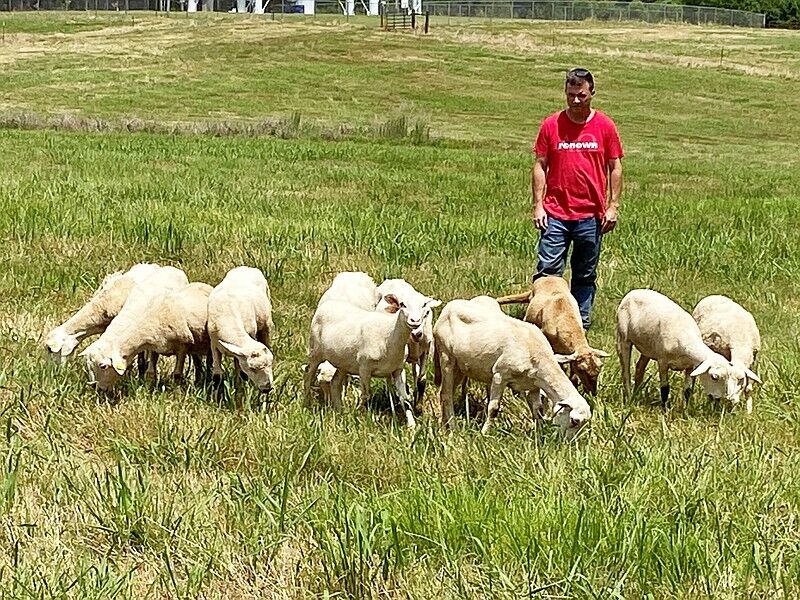UAM adds sheep herd to enhance learning opportunities for animal science, pre-vet courses

For years, the beef cattle herd grazing peacefully at the University of Arkansas at Monticello has been a roadside fixture. Now, passersby on U.S. 425 will see something new in the pasture: nearly two-dozen Katahdin sheep.
The first dozen sheep recently arrived at a field near the north end of campus under the UAM water tower. UAM Assistant Professor Rocky Lindsey and UAM Farm Manager Greg Montgomery unloaded and introduced the Katahdin sheep to their new home without incident. Eventually, the sheep herd will expand to 21, along with a smattering of goats and two guard dogs.
Lindsey said adding another species to the teaching herd will provide more learning opportunities for animal science and pre-vet students being taught through the College of Forestry, Agriculture, and Natural Resources, as well as research.
“The opportunity for animal management will be hands-on, especially for our students. Rocky and I will be in the background making sure about the major management decisions, but the whole point is for students to have a hands-on opportunity right here with these sheep,” Montgomery said.
Lindsey said the sheep and goats “can be a recruiting tool because we have a large community here of residents and students who raise sheep and goats that are under-served.
“We don’t have a lot of veterinarians that treat them,” he said. “We don’t have a huge amount of research or resources to serve them so they can draw on our information to use in their operation.
“By adding sheep and goats, we can serve the community better. Down the road, the sheep will likely be used for research,” said Lindsey.
“The sheep are something me and Rocky have looked forward to quite some time. We have seen the number of sheep growing in this part of the state,” Montgomery said. “There’s not a lot of information out there. I think that adds to our program and the knowledge we can give to our students.”
Learning from the sheep
“They are hair sheep, so they shed their wool each spring, so they don’t have to be sheared,” said Lindsey. “We will not be producing wool. We will be producing meat. There is a large community that prefers sheep meat, also known as mutton. We will be providing meat instead of wool as you normally would think of a sheep operation.”
He said the herd will be managed through the whole life cycle.
“We will raise these sheep to have lambs. We will vaccinate, we will help with the maternity process, we will help with keeping the feet sheared and protect them from parasites and treat them accordingly,” Lindsey said.
Montgomery has been managing the beef farm for 26 years.
“The campus has had cattle for more than 40 years. We had pigs, but I’m not aware of any sheep before these,” said Montgomery.
“Sheep are supposed to be very complementary with beef cattle, especially when it comes to forage management and learning how to take advantage of both animals,” he said. “We are very lucky here at the university. We have enough acreage that we can have large and small ruminants, so we can turn out more information.”
Montgomery said about two months of planning went into bringing the sheep from Camden.
“Getting them today was the simple part. The process of getting ready was an endeavor,” Montgomery said. Preparations included building a new fence.
So far, the sheep have adapted well to their new home.
“They do know what an electric fence is,” Montgomery said, adding that, “I’m a little nervous about where they will be tomorrow morning, but I’m excited about where they are today.”


